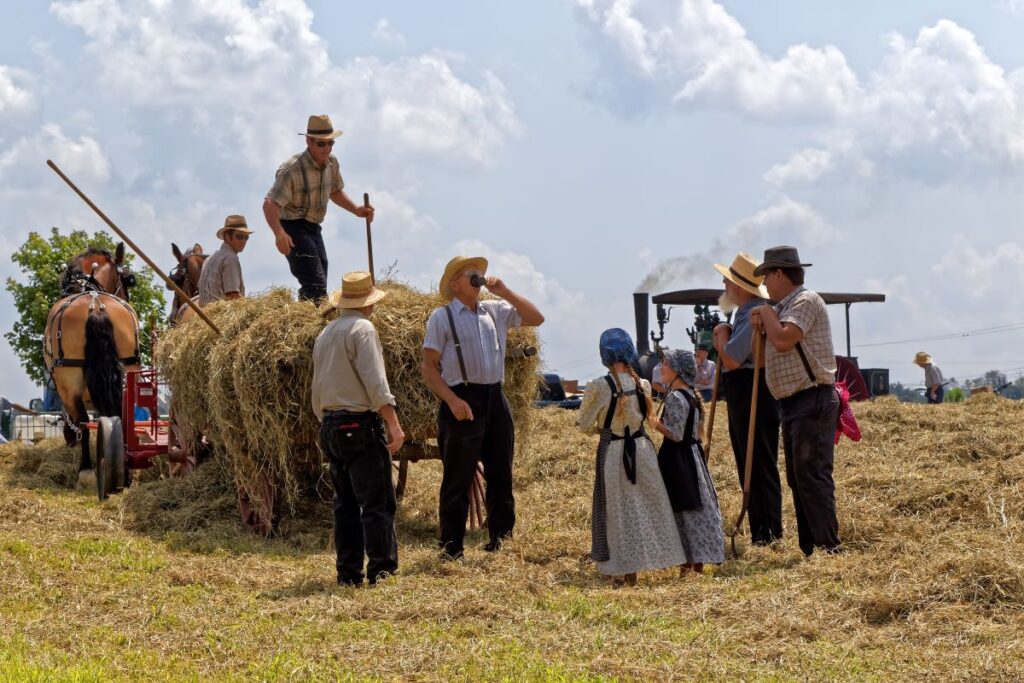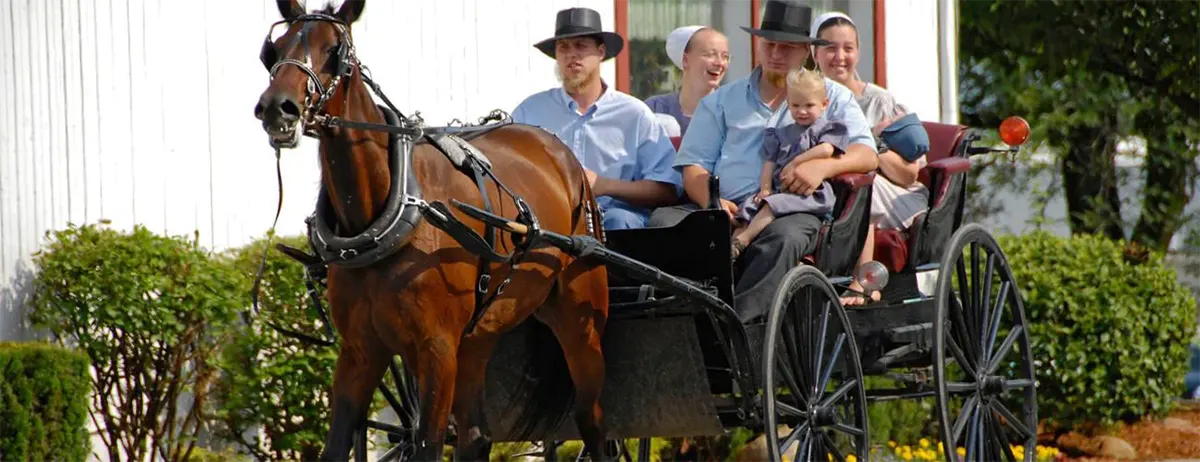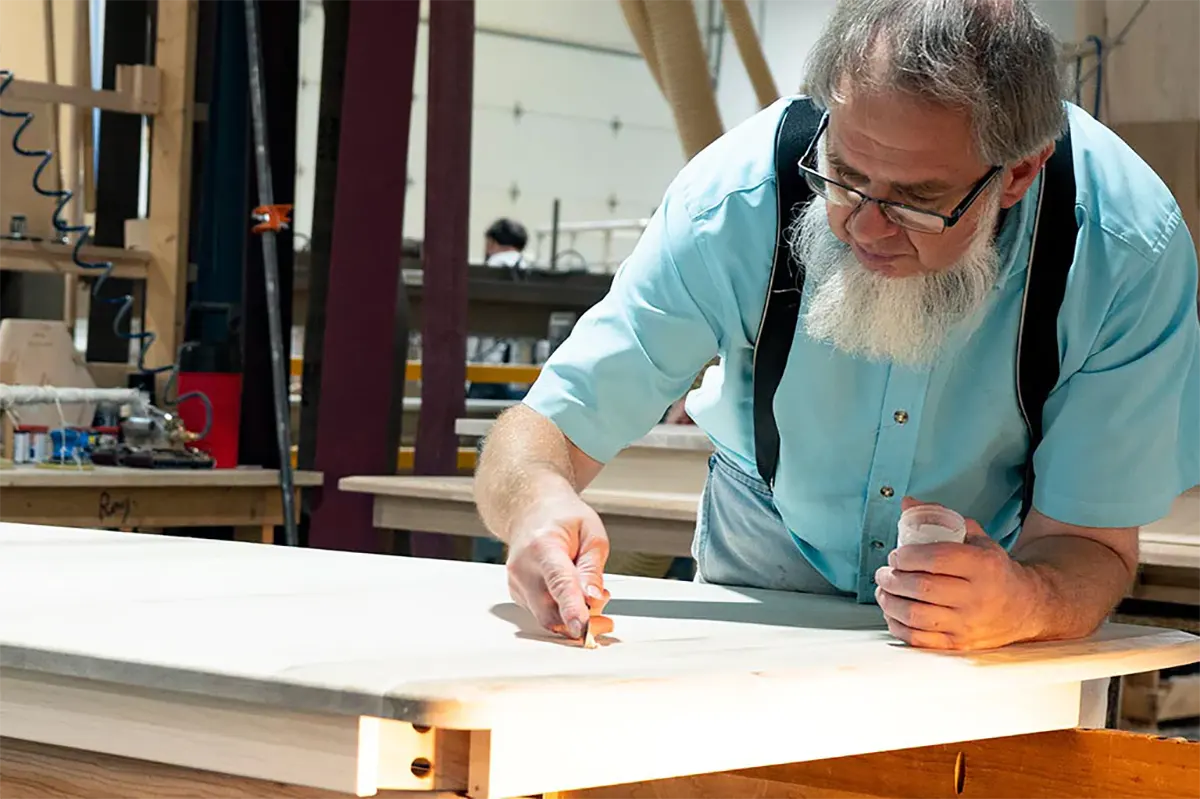
The Amish are known for their slowness in adapting to the modern world due to religious reasons, simplicity, and isolation from the rest. They don’t own most of the stuff non-Amish people do, and they do things differently. One example is their concept of time. Even though most Amish have clocks, their relationship with timepieces is limited because the Amish life rotates daily in a specific rhythm that is not dependent on clock time.
The Amish concept of time is closely tied to their religious beliefs and traditional way of life, emphasizing the importance of living in the present moment and prioritizing the needs of the family and the entire Amish community over individual desires.
To get a better understanding, read on.
Understanding The Amish Concept of Time

The traditional Amish people view time as cyclical rather than linear. One example of cyclical time is the changing of the seasons, which happens in a predictable cycle each year. Similarly, day and night cycles, the moon’s phases, and the planets’ movements all demonstrate natural cyclical patterns.
The Amish see the repetition of the seasons and the cycles of nature as evidence of God’s plan and order for the world. They believe in the idea of “Steadfastness.”
In practical terms, “steadfastness” for the Amish culture means being committed to their religious beliefs and practices, including regular church attendance, praying, and following the rules of their church community.
It also means being committed to their family and community, supporting one another in need, and upholding traditional Amish values.
The Amish also believe that the cyclical nature of time helps to reinforce their sense of community and interdependence. By living in close-knit communities and relying on each other for support, they can beat every life’s ups and downs and adapt to the changing seasons and circumstances.
The Amish religious beliefs dictate that focusing on the present moment rather than the future or past and living in harmony with nature is essential to leading a fulfilling life.
By prioritizing the immediate needs of their land, animals, and families, they can live more sustainably and mindfully, which the Amish church believes aligns with God’s plan for the world.
Do Amish People Use Clocks?
Although the world’s giant cuckoo clock is built in the largest Amish population in Amish Country, Northeast Ohio, most of the general Amish population use clocks and other time-keeping devices for practical purposes only. It includes coordinating Amish community events or keeping track of appointments with non-Amish people.

As we all know, people from traditional Amish communities do not use modern conveniences like mobile phones or computers. Therefore, they are not as closely tied to clock time as other non-Amish people.
What Timepieces Do the Amish Use?
The Amish generally do not use modern timepieces such as digital watches or smartphones, as these are considered worldly and disruptive to their traditional way of life. Instead, they rely on more conventional timekeeping methods that align with their simple, self-sufficient lifestyle.

Some Amish communities may use mechanical clocks, such as grandfather clocks or wall clocks, which are powered by weights or springs and do not require electricity.
These clocks are often handcrafted and passed down through generations, and they can serve as both practical timekeepers and decorative objects in the home.
In addition, the Amish may also use natural cues to keep track of time, such as the position of the sun or the sounds of the natural environment.
For example, they may know it’s time to start their workday when the rooster crows or it’s time to rest when the sun sets.
Do the Amish Observe Daylight Saving Time?
While some Amish communities may choose to observe Daylight Saving Time for practical reasons, such as to avoid conflicts with the schedules of non-Amish neighbors, many Amish communities opt out of the time change altogether.

The Amish communities’ decision to not observe Daylight Saving Time is due to some reasons. They believe living a life in harmony with nature and the seasons and adjusting the clocks twice a year can disrupt this natural rhythm.
Additionally, many Amish people work in agriculture, which is heavily influenced by the seasons and natural daylight. Changing the clocks can significantly impact their work schedules and productivity.
The Amish have a strong sense of community, and they often prioritize consistency and unity within their communities over conformity to external social norms, such as Daylight Saving Time.
Does following Daylight Saving Time violate any law by the Amish culture?
Daylight Saving Time is not directly addressed in Amish religious laws or beliefs, as it is a relatively modern concept.
However, some Amish communities may choose not to observe Daylight Saving Time for various reasons, including their traditional way of life and rejection of modern technology.
What Time Do the Amish Go to Sleep?
While Amish families do not necessarily follow a rigid schedule or adhere strictly to clock time, they typically go to bed early and wake up early, often before sunrise.
While the exact time may vary depending on individual preferences and the specific demands of their work or community, it is common for the Amish to go to bed between 8:00 PM and 9:00 PM.
Because the Amish lifestyle emphasizes physical labor and hard work, getting enough rest is an essential part of maintaining good health and being able to carry out their daily tasks.
Since the Amish community and their families are on top of the Amish values, like what their church services teach them, retiring early at night also gives them more time to engage with those around them.
How Do the Amish Wake Up On Time?
The Amish generally wake up early in the morning, often before sunrise, and their waking time is often dictated by the natural rhythms of the seasons and the demands of their farm work.
However, in cases where they need to wake up at a specific time, such as for a community event or appointment with a non-Amish person, they may use an alarm clock or rely on other Amish community members to wake them up.
In some homes, one of the older Amish children may be responsible for waking up the rest of the family. This person may use a simple alarm clock, but they may also rely on other cues, such as the rooster’s crowing or the behavior of animals, to determine when it is time to wake up.
In addition, many Amish settlement areas have a bell or a loud instrument to signal the start of the day or the beginning of a community event. It coordinates the activities of the entire Amish community and ensures everyone is on the same schedule.
How Many Hours a Day Do the Amish Work?
The amount of time the Amish work each day can vary depending on the season, the specific demands of their work, and the customs of their particular community.
However, the Amish are generally known for their strong work ethic and often work long hours, especially during the busy farming seasons.
During the spring and summer, when the seasons are favorable for outdoor work and the crops need tending, the Amish may work up to 12 hours a day or more.
This work may involve planting, cultivating, and harvesting crops, caring for livestock, and performing other tasks related to their farming lifestyle.
When the weather is colder and the days are shorter during the fall and winter, the Amish may work fewer hours daily but still engage in various activities such as woodworking, quilting, and other crafts.
What Do the Amish Do In Their Free Time?
The Amish people’s free time is often spent engaged in activities that reflect the centuries-old Amish tradition. Some everyday leisure activities in the Amish culture include:
Spending time with family

The Amish place a high value on family life and often spend their free time with loved ones, including participating in family dinners and outings.
Engaging in manual crafts

Many Amish enjoy working with their hands and creating handmade items such as quilts, woodworking, basket weaving, and other crafts.
Playing games and sports
The Amish enjoy playing games and sports such as softball, volleyball, horseshoes, board games, and card games.
Attending church services and social events
The Amish attend church services and other religious events to connect with their faith and community.
Reading and storytelling
Many Amish enjoy reading books, particularly those related to their faith, and telling and listening to stories.
Visiting neighbors and friends
The Amish value strong community relationships and often spend time visiting with neighbors and friends, particularly during social events such as weddings and church services.
Conclusion
The Amish concept of time is grounded in their religious beliefs and values, their close relationship with nature, and the natural world’s rhythms.
The Amish believe that time is a gift from God and should be used wisely to serve God and the community. They believe in the importance of living in the current moment and making the most of each day rather than being preoccupied with the past or future.


